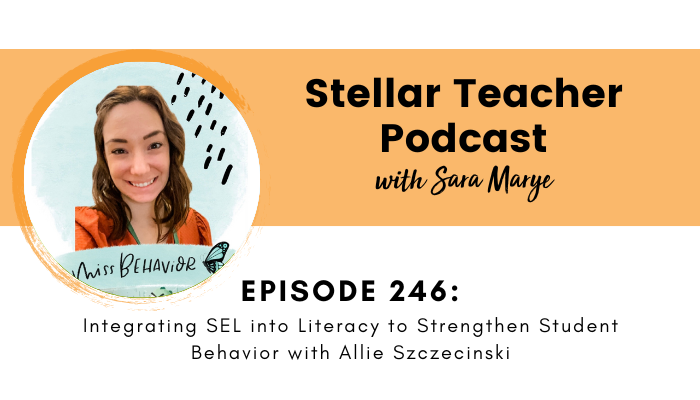
Click play below to listen to how you can integrate SEL into your literacy block to strengthen student behaviors.
Managing student behavior can be one of the most challenging parts of teaching, and it’s easy to feel frustrated, overwhelmed, or even like you’re doing something wrong. But what if there was a way to navigate classroom behavior with more confidence and compassion—without shame for teachers or students? That’s exactly what today’s guest, Allie Szczecinski, is here to talk about. Allie is the creator behind Miss Behavior and the author of the upcoming book Their Best Behavior, and she’s sharing practical, teacher-friendly strategies to support students while creating a positive and structured learning environment.
In this conversation, Allie and I discuss the intersection of social-emotional learning (SEL) and literacy instruction, simple ways to integrate SEL into your daily lessons, and how a proactive approach to behavior management can transform the classroom experience. We also tackle some of the most common behavior challenges teachers face and what to do when you feel stuck without a clear plan for support. Whether you’ve struggled with student back talk, disengagement, or inconsistent classroom routines, you’ll walk away from this episode with actionable strategies to try right away.
If you’ve ever taken student behavior challenges personally or wished for more effective ways to support struggling students, this episode is for you. Allie’s approach removes shame from the conversation and replaces it with understanding, structure, and clear next steps. Let’s dive in!
Meet Allie
Allie Szczecinski
Allie Szczecinski, M.Ed., has both her undergraduate and master’s degrees in special education, as well as 15+ years of classroom experience with children in grades K-5. After struggling to find relatable content and helpful resources on social media to support children with significant behavioral needs, Allie started the online platform Miss Behavior. She provides community, resources, and information to educators across the globe and has become a reliable and relatable resource for behavior and social emotional support. In 2020, she released her first book, a picture book titled Roaring Mad Riley. These days Allie is a full time social emotional learning coach at a public elementary school in Chicagoland, a mom of two amazing young children, reading, and loves traveling with her family in their (very limited) spare time.
In this episode on integrating SEL into literacy to strengthen student behavior, we share:
- How literacy instruction can be a natural way to support SEL and improve student behavior
- Why integrating SEL into read-alouds and discussions helps students develop emotional awareness
- Simple ways to use character experiences to teach decision-making and self-regulation
- How structured literacy routines can create a sense of security and reduce behavior challenges
- The role of writing in helping students process emotions and build social-emotional skills
- Why small SEL moments—like identifying emotions in texts—add up to big behavior shifts
- Practical, low-prep strategies to weave SEL into your literacy block without adding more to your plate
Resources:
- Join The Stellar Literacy Collective
- Preorder Allie’s book
- Casel Website
- Sign up for my Private Podcast: Confident Writer Systems Series
- Sign up for my FREE Revision Made Easy email series
- If you’re enjoying this podcast, please leave a review on Apple Podcasts!
Related episodes and blog posts:
- Episode 154, My #1 Tip for Creating a Strong Classroom Community and Culture
- Episode 126, From Stress to Success: Strategies for Empowering Students on Testing Day
- Episode 103, 5 Tips That Help Students Improve in the Area of Writing About Reading
- 5 Writing About Reading Tips: A Path to Deeper Comprehension
Connect with me:
- Join my newsletter
- Shop my TPT store here
- Subscribe to our YouTube channel
- Instagram: @thestellarteachercompany
- Facebook: The Stellar Teacher Company
More About Stellar Teacher Podcast:
Welcome to the Stellar Teacher Podcast! We believe teaching literacy is a skill. It takes a lot of time, practice, and effort to be good at it. This podcast will show you how to level up your literacy instruction and make a massive impact on your students, all while having a little fun!
Your host, Sara Marye, is a literacy specialist passionate about helping elementary teachers around the world pass on their love of reading to their students. She has over a decade of experience working as a classroom teacher and school administrator. Sara has made it her mission to create high-quality, no-fluff resources and lesson ideas that are both meaningful and engaging for young readers.
Each week, Sara and her guests will share their knowledge, tips, and tricks so that you can feel confident in your ability to transform your students into life-long readers.
Tune in on your favorite podcast platform: Apple, Google, Amazon, Spotify, Castbox, and more! If you’re loving this podcast, please rate, review, and follow!
Podcast (stellar-teacher-podcast): Play in new window | Download
Sara
Hey, teachers, have you ever felt overwhelmed or unsure about managing student behavior in your classroom? If so, you’re not alone. Behavior challenges are something every teacher faces, and they can often feel frustrating and even personal at times. That’s why I’m so excited for today’s conversation with Allie Szczecinski, the creator behind Miss Behavior and author of the upcoming book Their Best Behavior.
Allie has a heart for helping teachers navigate behavior challenges with confidence and compassion. When I asked her what she hopes teachers take away from her book, she said she wants to remove shame from the conversation—for both teachers and students. As she puts it in our conversation, “There are some behavior books that either shame the teacher or shame the student. I wanted this book to make sure we’re shaming no one at the end of the day.” And I absolutely love that approach.
So if you’ve ever taken student behavior challenges personally and need a coach and cheerleader to guide you through them, you’re going to love this conversation with Allie. Let’s dive in.
Hi, Allie! Welcome to the show. I am so excited to chat with you today.
Allie
Hi, Sara! Thanks for having me.
Sara
Absolutely! So we’re going to go ahead and jump right in and get started with the nitty-gritty here. You are incredibly passionate about helping teachers find simple and effective solutions for student behavior challenges. When I was in the classroom, I feel like I needed a friend like you!
I’m curious to know—what inspired you to make SEL and behavior support such a core focus of your work? How did Miss Behavior come to be, and ultimately, how did that lead to your new book Their Best Behavior?
Allie
Sure! So I am a special education teacher. I taught for 10 years in Chicago Public Schools, and my classroom was made up entirely of students with significant intellectual disabilities. That was really my niche at the time—it was my life, my passion. There was so much communication and differentiation involved, and I absolutely loved it.
Eventually, it was time for me to move on from the district, and I took a job working with students who had more significant behavioral disabilities. While behavior was definitely part of my previous role, it wasn’t the core focus—but now it was about to be.
So I immediately went to one of my favorite places for professional development, which at the time was Instagram, Pinterest, and teacher blogs. I wanted to hear from people who were actually doing this work—what was working in their classrooms? But I really couldn’t find much at the time. This was around 2015, and while I knew I wasn’t an expert yet, I thought, What if I start documenting what I’m doing? Maybe I’ll find my people that way.
And that’s really how this all started. I shared everything—the books I was reading, the activities I found that worked, and even the ones that didn’t. I posted it all on social media, and over time, it turned into my passion project. Through that process, I realized that we really need to focus more on SEL with our general education population so we can get ahead of some of the tricky situations that I saw my students struggling with. So it all grew pretty organically from there.
Sara
I love that! And I also love that your first instinct was to go to Instagram and Pinterest for professional development. I feel like when I was in the classroom, I did the exact same thing!
But to your point, I love that you were searching for resources and support from teachers who were actually doing the work—and when you couldn’t find what you needed, you became the person to create that space. That’s so powerful!
I always love to encourage teachers: if you’re in the classroom doing this work, you have experiences, stories, and knowledge that can benefit so many other teachers. So if you’re hearing this and feeling inspired by Allie’s story, get out there! Share on Instagram, start a blog, create a podcast—whatever format works for you. There are teachers out there looking for the knowledge and support that only you can provide.
Allie
Yes! This is your sign!
Sara
So, you talk a lot about the intersection of SEL and literacy instruction. Let’s take a big-picture look at that—how can teachers use their literacy instruction to support students’ SEL growth?
Allie
I think sometimes SEL feels really abstract to people, or like something that requires hours and hours of preparation. But the truth is, most teachers are probably already doing it—they just don’t realize it. And once you recognize that, you can start to lean in and go even deeper, honestly, in every lesson.
As we know, literacy involves a lot of reading, right? We’re engaging with books, and it’s not just about isolated skills—it’s also about listening comprehension and understanding the bigger picture of a story. And any good book has a problem and a solution. The characters experience a variety of emotions. Using that time to dive into those aspects can be so beneficial.
And what’s great is that it feels a lot less threatening for kids because it’s not a story about them—it’s a story about someone else. But we can use that as a jumping-off point. Later in the day, if you notice a peer conflict or hear a shift in a student’s tone, you can connect it back to a character or an experience you discussed in a book. It becomes this really organic way to explore tricky topics.
And it can start as simply as that. I think teachers often don’t realize how much SEL work they’re already doing, but it’s woven into their instruction every single day. It’s just a matter of bringing awareness to it.
Sara
Yeah, and I love that reminder—pay attention to the books that have problems and solutions, that show a character making decisions, taking responsibility, developing empathy, or working through challenges. Those are natural opportunities to have SEL conversations.
We were just doing a workshop last night, talking with teachers about how we often focus so much on teaching literacy standards. But because we’re reading so much, there’s so much more we can pull from the books we’re using. SEL is a huge part of that. And I think just having the awareness that there’s this built-in opportunity to incorporate SEL makes a literacy teacher’s job feel even more important and powerful. Because we’re not just helping students grow as readers—we’re helping them grow as people.
So, kind of a follow-up question to that—why should SEL be on every teacher’s radar? What makes it such a critical component for student success, both academically and socially?
Allie
We hear all the time that SEL is important, that it’s the foundation for everything else. These big, lofty concepts get thrown around, but when you break it down, it’s really true.
Think about it—if you show up to work feeling frazzled, after having a hard weekend, or dealing with personal stress, yes, you can power through and do what needs to be done. But you’re not operating at your best, right? We all know that feeling.
And sometimes we just need a reminder that kids are people too. They’re experiencing those same feelings. Maybe they’re stressed about what happened at recess, maybe they didn’t eat breakfast, maybe they missed the bus and their mom was frustrated with them for making her late to work. Every student walks into the classroom carrying something.
So when we prioritize SEL, we create a space where students feel more secure, where they know they’re supported, and that allows them to take academic risks.
I was at a conference once, and I heard this amazing analogy about the school day being like a meal. Literacy, math, social studies, and science—those are all the different parts of the meal, the salad, the main course, the sides. But SEL? SEL is the plate that holds everything together.
And that analogy really stuck with me because it’s true. You can’t have a meal without the food, but without a plate, everything just falls apart. SEL is what keeps everything in place, making sure students are emotionally and socially equipped to engage with all the other learning that’s happening in the classroom.
Sara
Yeah, I love that analogy because you’re right—nobody wants to eat their food off the table.
Allie
Or out of their hands!
Sara
Yeah, you have to have that vessel. But to your point, I think sometimes we forget that kids are people, and they have big feelings and emotions, and nobody is really teaching them how to cope with stress, anxiety, disappointment, sadness, or even just how to validate those emotions.
So when teachers create a space where they openly talk about SEL and help students become more aware of their emotions and what they’re feeling, it can make a huge difference. I’m a relatively anxious person, and I think back to my school experience—I wish I had been in a school where someone had taught me anxiety coping skills as a kid. That would have made such a difference in my high school, college, and even adult life. Because for me, it wasn’t until I became an adult that I started learning how to manage it. And I think about how many kids we can support in the classroom right now so they don’t have to wait years to figure these things out.
Allie
Yeah, Sara, that is one of the most common things I hear from adults when I’m working in classrooms—Man, I wish I had learned these skills as a kid. And of course, it’s not going to be perfect, but if kids start learning these things early, think of how many years they’ll have to practice before they become adults who are more confident in handling challenges.
Sara
Focusing on SEL really is a gift that stays with students as they grow. So let’s get really specific here—what are some actionable ways that teachers can integrate SEL into their literacy instruction to set students up for success?
Allie
Sure. So again, a lot of these things are probably things teachers are already doing, but when we give them some intentional focus, we can make them even more impactful.
I think back to when I first started teaching and how the CAFE model was such a huge thing. We’ve moved on to a different era of literacy with so much new knowledge, but there was something really valuable about having structured routines—students knew what they were doing in each rotation, what the expectations were, and how long they’d be there.
And for students who struggle with anxiety, knowing the plan is incredibly comforting. Even if what they’re doing in each rotation changes from day to day, having that structure in place makes it feel familiar and predictable. And as much as we might like to think of ourselves as spontaneous, the reality is that everyone thrives on routine in some way.
So simply making sure that your literacy routines—and, if you use centers, your center structures—are clear and consistent can be such a gift to students.
Sara
I love a routine! I’m always telling teachers—make your entire literacy block full of routines. It helps teachers, too, because it means less thinking for you. You can just say, Okay, this is our routine for our read-aloud, our small groups, our word study, our sentence writing, and it all becomes second nature.
And like you mentioned, one of the biggest benefits of routines for students is that they don’t have to waste mental energy figuring out what’s next. They’re not wondering, Who’s my partner? How do I complete this task? What am I supposed to be doing? Instead, they can really focus on the content. Routines eliminate so many unnecessary distractions, reduce stress, and create an environment where students can fully engage in learning.
Allie
Totally!
Sara
Okay, I love that suggestion. What other actionable things can teachers put in place?
Allie
So another huge component of literacy is writing. The writing activities you incorporate can be really strategic. And again, going back to the idea of using character experiences from stories—if you’re doing a novel unit or just finished a read-aloud, and there’s a response piece, those writing activities can be intentionally designed to focus on specific emotions and help students make connections to the story. There are so many ways to weave SEL skills into writing, and one great place I always look for guidance is CASEL. They are the leaders—the gurus—of SEL research, and they have identified five SEL competencies that they’ve determined to be the most beneficial and important for children all the way through adulthood. Keeping those competencies in mind, or even writing them down when planning lessons, can help guide your language and focus. So not only are you making connections to the book, but you’re also drawing from research on what would be most helpful for students to take away from the text.
Sara
I love any opportunity to create a meaningful writing experience beyond just Today, we’re writing about this specific prompt.
Allie
Totally.
Sara
If students are reading a story about a character facing a challenge, and there’s a clear SEL focus, having them write in response to that is such a great opportunity. There’s so much research that shows that writing about reading actually improves comprehension, so it’s a win-win. But I also love reminding teachers that they can use an SEL-focused prompt—whether it’s for personal reflection and growth or based on a book—and integrate it into the writing process. You don’t need a separate writing lesson. They can brainstorm, draft, revise, and edit all through an SEL lens. It’s not about finding extra time; it’s about being strategic with what students are writing about and how it’s incorporated into the literacy block. So anytime we can be intentional with writing activities, that’s a huge win.
Allie
Absolutely! It removes that extra layer of stress from additional planning.
Sara
Yeah, absolutely. What other ideas do you have?
Allie
I’m going to go back to CASEL again because their framework is so simple and effective. They have what’s called the CASEL Wheel, and if you visit casel.org, they have this great visual that’s incredibly helpful. Just having it nearby while you’re asking questions, prompting discussions, guiding turn-and-talks, or structuring writing responses can be a game-changer. It takes away some of the stress of additional planning because it provides a clear guide for tying SEL skills into your instruction. And knowing that what you’re doing is backed by research—helping kids develop holistic SEL skills—is such a gift. Having that framework in front of you can make it easier to embed these ideas naturally into your teaching.
Sara
What would you say are some of the key interpersonal skills that teachers should look out for or try to reinforce with their students?
Allie
One that I really love, especially when tying it to literacy, is responsible decision-making. How did the character in the story make a choice? How did they get to that decision? Was it influenced by peer pressure? Was it based on a core value of theirs? There are so many ways to explore this, and it’s a great opportunity to dig into topics that might not come up otherwise—especially with young children.
At the end of the day, this is identity work. Students begin to determine what drives them. Am I driven by my peers and wanting to fit in? Am I driven by my personal passions? My family values and culture? Exploring these ideas through literature allows them to reflect on their own decision-making processes and compare them to the characters they read about. It’s always fascinating to see whether their motivations align with or differ from those in the books.
Sara
I love that question, and you could ask it for any fiction book you’re reading and have such an in-depth conversation—not just about the character and what’s happening in the story, but also, like you said, about the identity work that we sometimes forget to do in the classroom. So yeah, that’s such a great question, and it’s easy to ask with any book you’re reading.
Allie
Right. It always applies.
Sara
I’m sure, as you know, teaching literacy and managing classroom behaviors can feel overwhelming for teachers. So what are some SEL practices that teachers can use to help regulate their own emotions and maintain a positive learning environment? I feel like this isn’t something we talk about often enough.
Allie
Right. One thing I’ve learned—especially now that I’m a teacher coach—is that we need to take care of ourselves first. Before we can teach SEL to our kids, we have to understand it and have some kind of personal practice in place. We already know this in literacy instruction—you have to care about reading, love reading, and understand what you’re teaching before you teach it. It’s the same with SEL.
So taking care of yourself—making sure you have water nearby, taking a sip before responding to a tricky situation, pausing before reacting to back talk—those small actions make a difference. You don’t have to respond right away. Give yourself a moment to breathe.
There were times when I was overly stressed—maybe because of the kids in front of me, maybe my personal life, or just struggling to get good sleep. There are so many reasons teachers feel this way. One thing that helped me was having a small reminder—like a sticker on my lanyard or a bright Post-it note placed somewhere in my classroom where I would see it often. When I caught sight of it, it was my cue to take a deep breath, unclench my jaw, and reset for a second.
We don’t always need to remind ourselves only when we’re stressed—it should be something we carry throughout the day. That way, when a stressful moment does happen, we’re already in a more regulated state and can be the calm presence our students need. Does that make sense?
Sara
Yeah. And I think even just those simple things—remembering to drink water, remembering to breathe, relaxing your shoulders, and taking a moment to collect your thoughts—can make such a difference.
I also love your reminder that we don’t always have to respond immediately. If a student is acting out, if there’s back talk, if something happens in the classroom—you don’t have to jump in and give an immediate response. You can take a breath, collect your thoughts, and give yourself and the class a moment to reset.
I think we often feel like we have to intervene right away, but sometimes, what’s best for us and our students is to pause before responding. There’s nothing wrong with that.
Allie
Yeah. And honestly, that’s often exactly what we need.
Sara
Yeah. And our students too, for that matter. They might need that moment as well.
Allie
Exactly. Sometimes they need that moment to realize, Wait, that wasn’t a great idea, and they’ll come to that conclusion on their own.
Sara
Yeah. So what advice do you have for teachers who want to integrate SEL into literacy but feel constrained by time or curriculum demands? I know a lot of teachers tell me, I can’t supplement, I can’t deviate, my school is very rigid. What encouragement do you have for them?
Allie
That’s such a tricky situation, and I get it. Some of these curriculums—whether we love them or hate them—are what we have to work with. But even within those constraints, there are ways to bring in SEL.
I would encourage teachers to take just 30 seconds during a literacy lesson to highlight an emotion that a character is experiencing or about to experience. Just acknowledge it. Name it. Bring attention to it.
It might feel like a small thing, but it adds up. You are planting seeds, and seeds take time to grow. SEL learning isn’t always as linear as academic skills, where you see progress right away. With SEL, you might not notice a huge change immediately, and that can be discouraging, especially if you feel like you don’t have much time to devote to it. But I promise—it is working.
Even those tiny moments throughout the day matter. They really add up to something bigger.
Sara
Well, and I always like to think about and remind teachers—you have 180 school days. If every day during your read-aloud, you identified one emotion, had a quick discussion about it, asked a question, and let students respond, that’s 180 interactions where students are building awareness, reflecting, discussing, and thinking about these things. That’s so much more than they would have had without it.
So yeah, the small things really add up. Even if you have rigid and strict curriculum demands, you can still ask your own questions. You can still create discussions that may not be directly connected to your curriculum but still focus on SEL. So yeah, those small things do make a difference.
Allie
Yes, it’s huge.
Sara
So, you have a new book coming out, which is so exciting—congratulations!
Allie
Thank you!
Sara
Their Best Behavior comes out this summer, and it focuses on practical strategies for 10 common classroom behavior challenges. Can you give us a little sneak peek? Maybe share some of the challenges you tackle and one or two solutions that teachers will find inside your book?
Allie
I would love to! The 10 strategies we talk about are the ones we see most often in schools. Some of them are situations that come up constantly—things like back talk, distractions, and students not being ready to start their work. And then there are the bigger ones, like school refusal or eloping from the classroom. These don’t happen as frequently, but they still occur in every school and can be more challenging to tackle.
So, some of the behaviors in the book are high-frequency, daily struggles, while others are less common but more complex. Each chapter highlights one specific behavioral challenge and includes two different case studies, showing ways to work with a team to support that child. My goal was to provide teachers with really practical solutions. I wanted a teacher to be able to read a chapter about something they’re struggling with and, quite honestly, start implementing a strategy the very next morning.
One of my favorite strategies, which I’ve used for years, is providing sentence stems for students who frequently talk back. You can’t just let back talk fly in the classroom—other students are watching, and you’re setting a precedent. But at the same time, you don’t want to get into a power struggle.
So, having pre-made sentence stems that students can use helps them express their frustration in a more respectful way. You can teach these to the whole class or to individual students who need them. Having these sentence stems ready removes the need for you to come up with a response on the spot and gives the child a clear strategy to communicate effectively.
Sara
I love that. I never used anything like that in my classroom, and now I’m thinking, Oh man, that would have been really helpful.
Allie
Right? It’s so simple! You just need someone to think about it and offer the idea, and suddenly, it makes so much sense.
Sara
I love that you said your goal is really to give teachers practical strategies that they can start using right away. I taught for, I think, 15 years in the classroom, and I experienced my share of behavior issues. There were some situations where I just thought, I don’t know what to do for this child. I don’t know how to support them. This feels like it’s going to be the longest year ever because these issues keep coming up.
And anytime I looked at research, it would be more abstract—focused on understanding where the behavior comes from, which is helpful. But I kept wondering, What should I actually be doing in my classroom to support these students? So I love that you are really focused on practical solutions. If teachers read your book, what do you hope they take away from it? What impact do you hope it has on their classroom?
Allie
Another big piece of this is that I feel like some behavior books either shame the child or shame the teacher. And student behavior feels personal to the teacher. It doesn’t matter if you have a PhD and 100 years of experience teaching students with behavioral challenges—you’re still going to feel that way, because you have to love the work to do it.
I wanted this book to make sure that, at the end of the day, no one is being shamed. I want these strategies to be affirming for the student. We’re not putting anybody in time-out. I also worked really hard to make sure the strategies don’t rely heavily on extrinsic rewards, because ultimately, we want to teach students how to move forward and develop these skills without always needing something tangible as motivation.
And I don’t want teachers to feel like they’re failing or that they should be able to manage everything on their own. A lot of these challenges aren’t meant to be handled alone, but so often, teachers find themselves isolated, just trying to figure it out. And the truth is, the systems we work in don’t always set us up with the time or resources we need to collaborate and make the necessary changes.
So my hope is that when teachers finish reading the book, they feel affirmed, empowered, and ready. I want them to feel good about the strategies they’re about to use, not like they’re punishing students, but like they’re helping them build skills that will serve them long term.
Sara
I know that is going to resonate with so many teachers—the desire to feel empowered, prepared, and equipped, without feeling shamed or shaming their students. Teachers care deeply about their students, even the ones with challenging behaviors, and I love that your approach removes shame from the conversation.
It’s not the teacher’s fault, it’s not the student’s fault—so let’s be proactive and intentional about how we support both teachers and students in these situations. I can’t wait to read your book! I’m not currently in the classroom, but I love finding strategies I can share with teachers who are still in the classroom. I haven’t read a behavior book in a while, but I’ll definitely be ordering this one. It sounds like it’s going to be so helpful for teachers.
Allie, thank you so much for coming on, sharing your experience, and talking about your book. Where can my listeners find Their Best Behavior and connect with you if they’re looking for more support, PD opportunities, or resources on behavior?
Allie
The best place to find me, along with links to everything, is on my website: missbehaviorblog.com. My book comes out on June 11, and right now, it’s available for pre-order. I’d love to connect with people and hear their thoughts on the book!
The place I’m most active is Instagram, where I share a little about my life and, of course, lots of insights on behavior and SEL—because that’s my passion and my why. I love talking about the intersection of academics and SEL because I truly believe it’s so important.
Sara
Absolutely! And we’ll link to all of those in the show notes so teachers can easily check them out.
So again, Allie, thank you so much for joining us today. This was so good.
Allie
Thanks for having me!


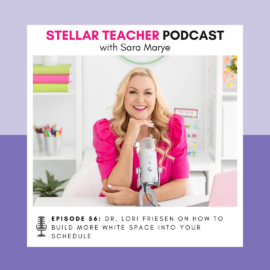

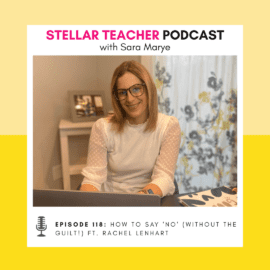
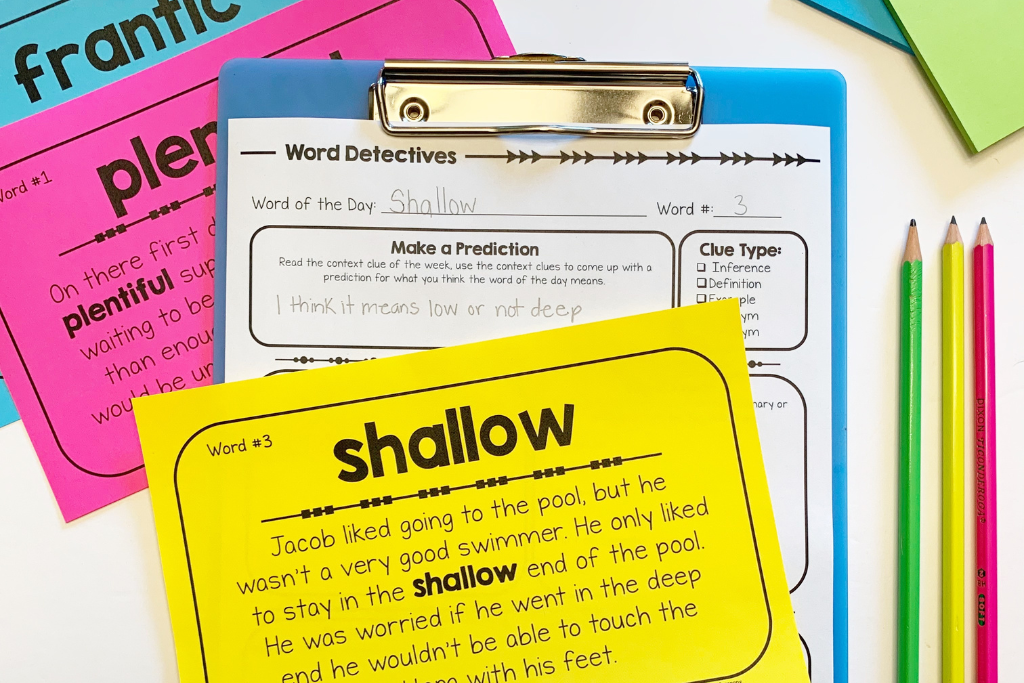

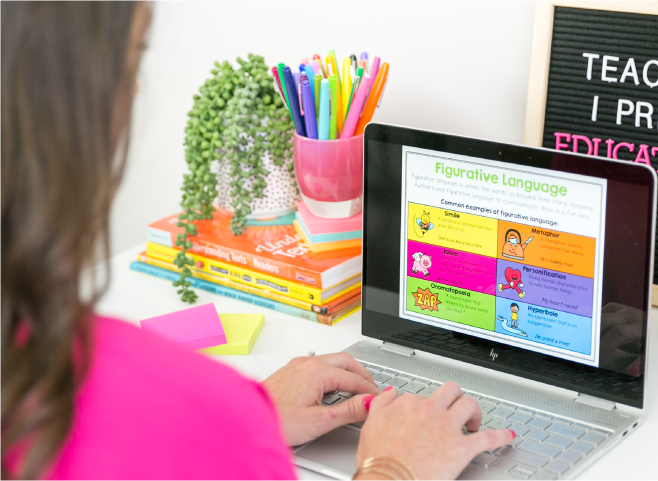
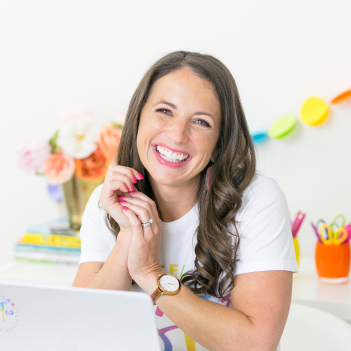
Leave a Comment
You must be logged in to post a comment.